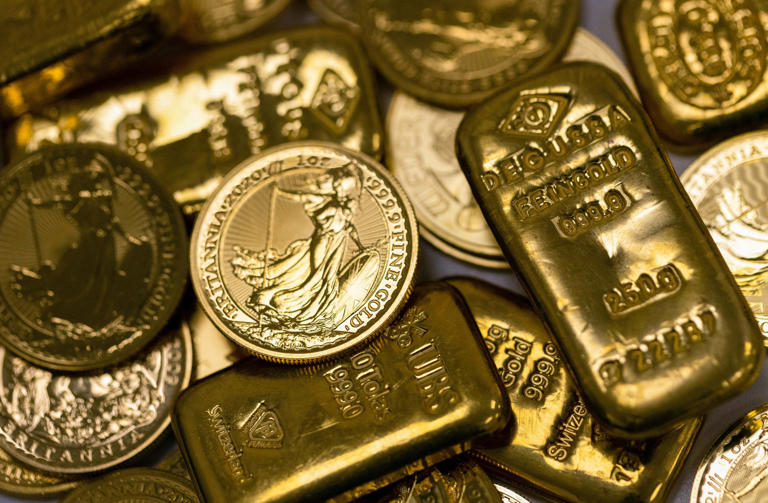The price of gold surged to a new record on Tuesday and continued its upward trajectory into Wednesday morning, showcasing a pattern that has confounded analysts and complicated future forecasts. At the latest update, one ounce of gold commanded $2,482, surpassing its previous peak set in May by over $30. This remarkable ascent underscores a significant shift in sentiment towards the precious metal, which has traditionally been valued as a safe haven asset in times of economic uncertainty.
Analysts are increasingly bullish on gold’s prospects, with expectations that it could potentially reach up to $3,000 per ounce within the next year, representing a 20% increase from current levels. This optimism stems from a variety of factors, including recent economic data and evolving monetary policies.
The recent surge in gold prices above $2,400 per ounce has been attributed to lower-than-expected CPI inflation readings in the USA. Data released last Thursday indicated that inflation slowed to 3% in June from 3.3% in May, contrary to expectations for a slight increase. Federal Reserve Chairman Jerome Powell’s subsequent remarks have heightened expectations for a rate cut at the Fed’s September meeting, with market odds now placing the likelihood at 98%, up significantly from just over 70% a week earlier.
The prospect of lower interest rates tends to diminish the opportunity cost of holding non-interest-bearing assets like gold, making it more attractive to investors seeking to hedge against inflation and market volatility. This trend is supported by the decline in yields on U.S. Treasury bonds, including the 10-year Treasury Inflation-Protected Securities (TIPS) yield dropping below 2% in July.
Looking ahead, analysts from various financial institutions have expressed positive outlooks for gold. Citi analysts foresee a potential range of $2,800 to $3,000 per ounce by the second half of 2025, citing historical patterns where precious metals typically see sustained price increases following periods of monetary easing. Societe Generale and Goldman Sachs have also maintained bullish forecasts, projecting prices around $2,750 to $2,770 per ounce by the end of 2024.
Despite historically being overvalued relative to other assets like bonds during periods of higher real interest rates, gold’s recent behavior has diverged from these conventional patterns. This divergence has been fueled by structural factors such as concerns over U.S. fiscal deficits, central bank diversification into gold reserves, inflation hedging, and geopolitical uncertainties.
In conclusion, the trajectory of gold prices reflects a complex interplay of economic indicators, monetary policies, and geopolitical tensions. As uncertainties persist, particularly surrounding the upcoming U.S. presidential elections and global economic stability, gold remains poised to maintain its appeal as a critical asset in investors’ portfolios seeking stability and long-term value preservation.
